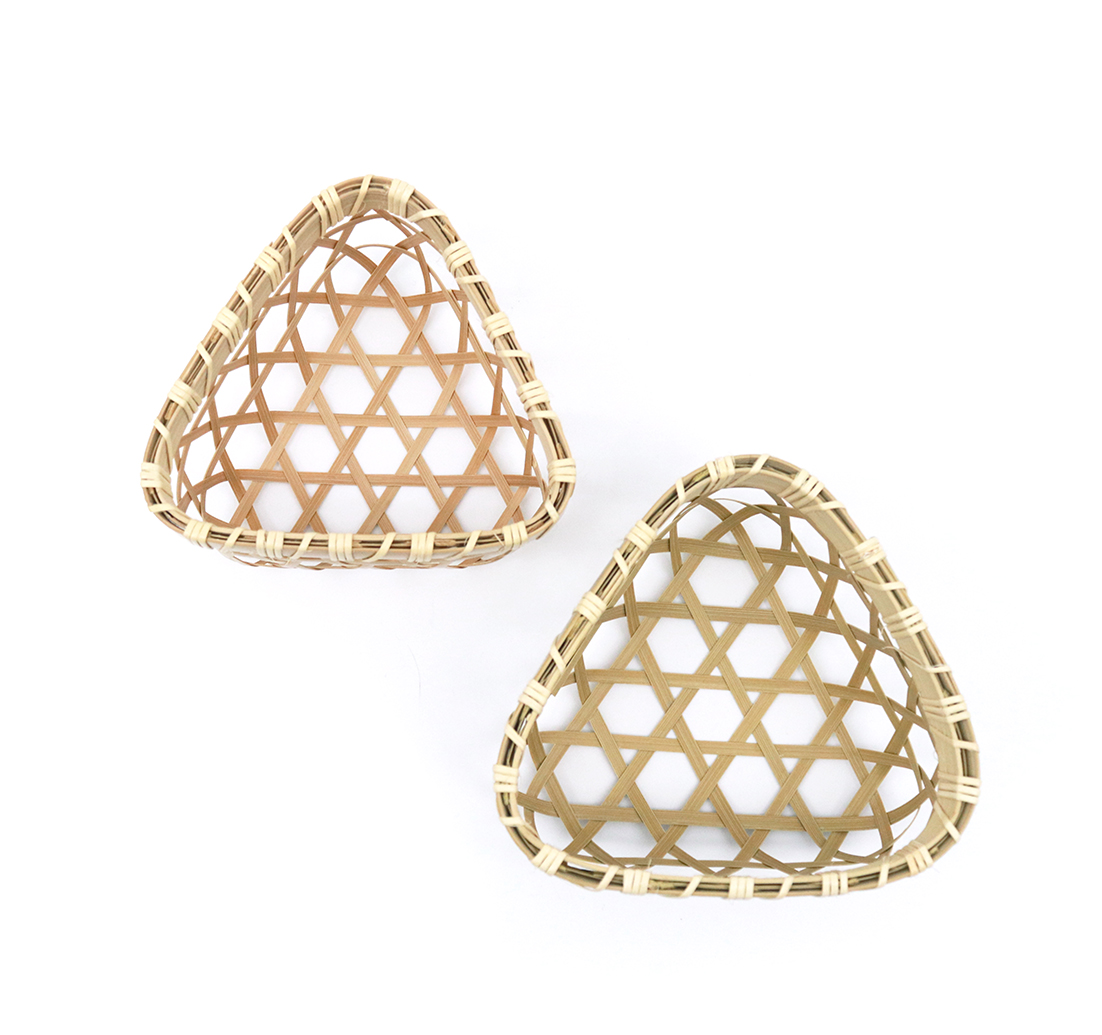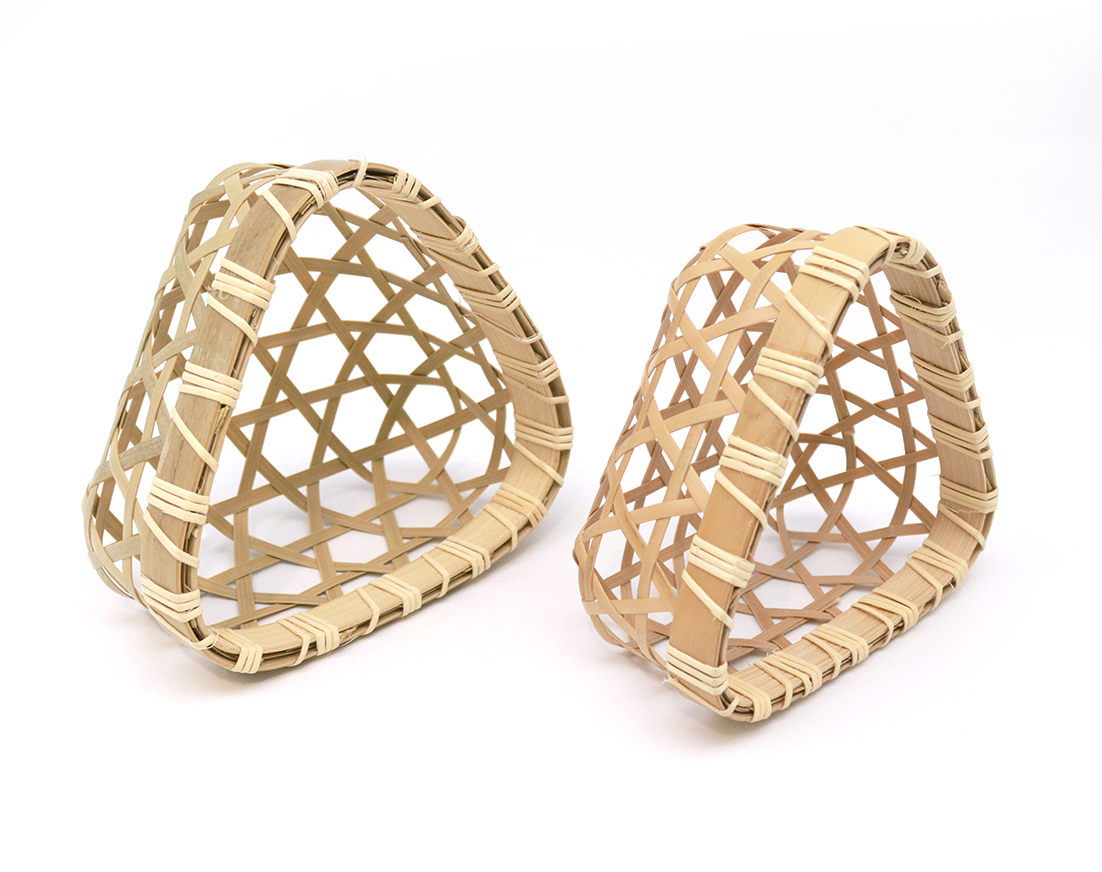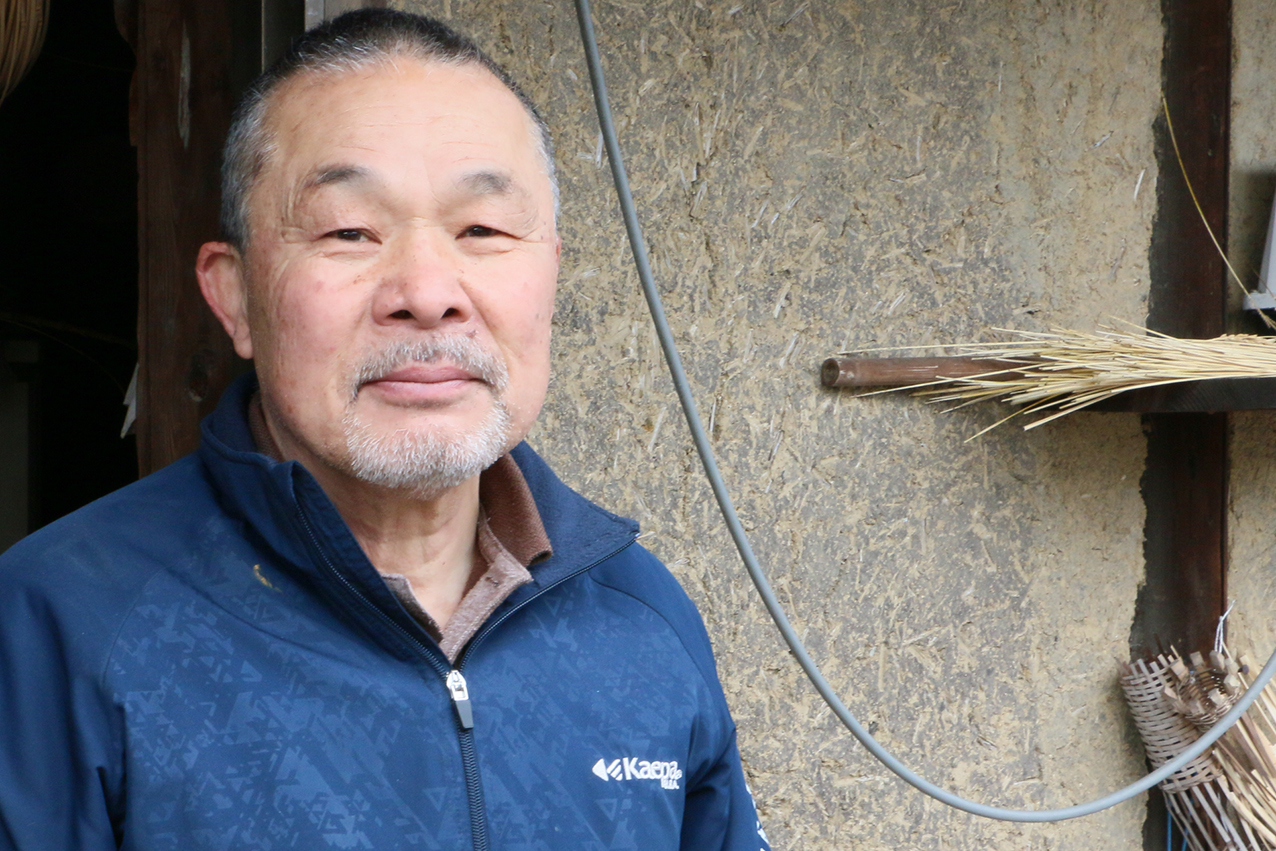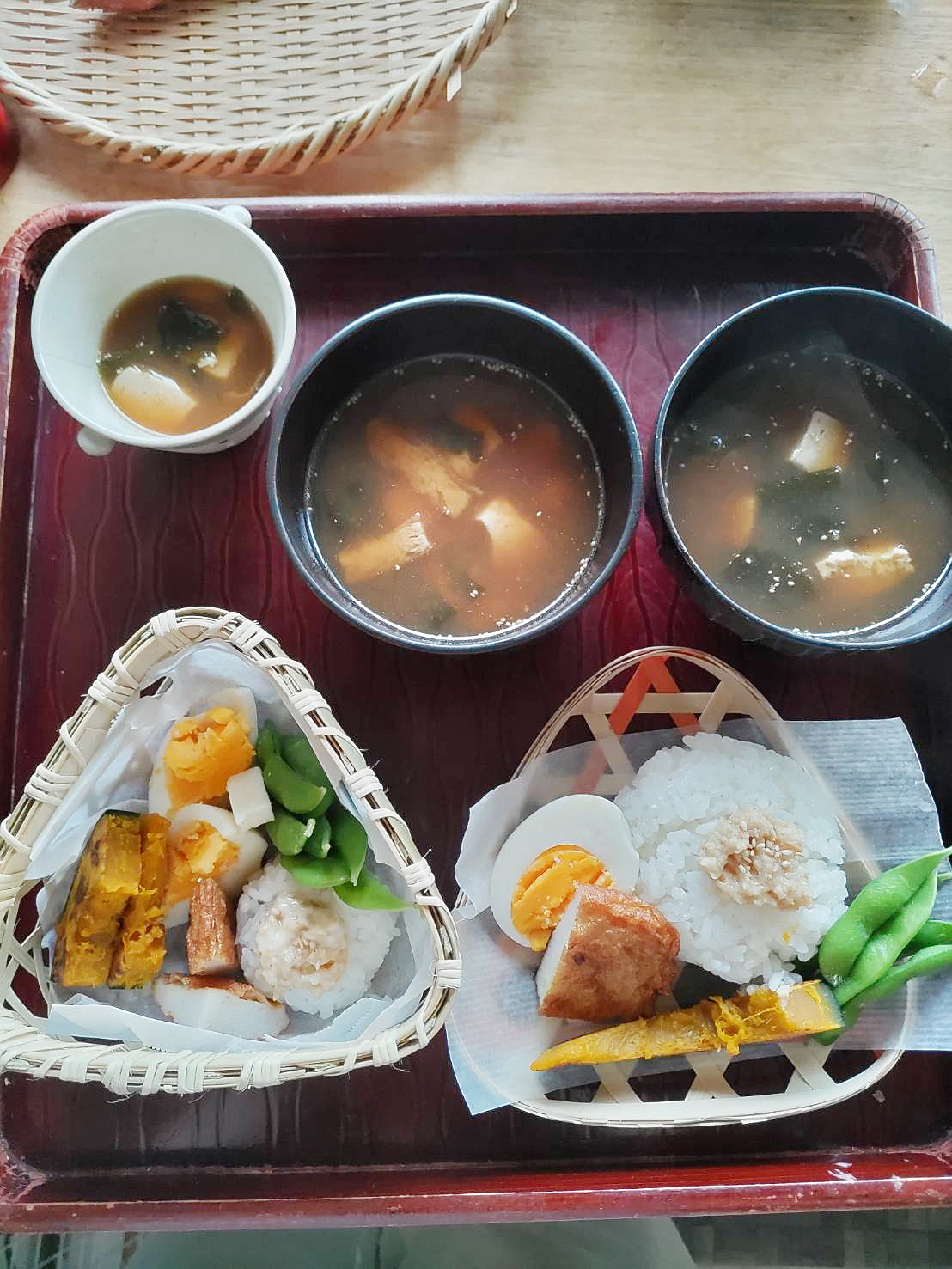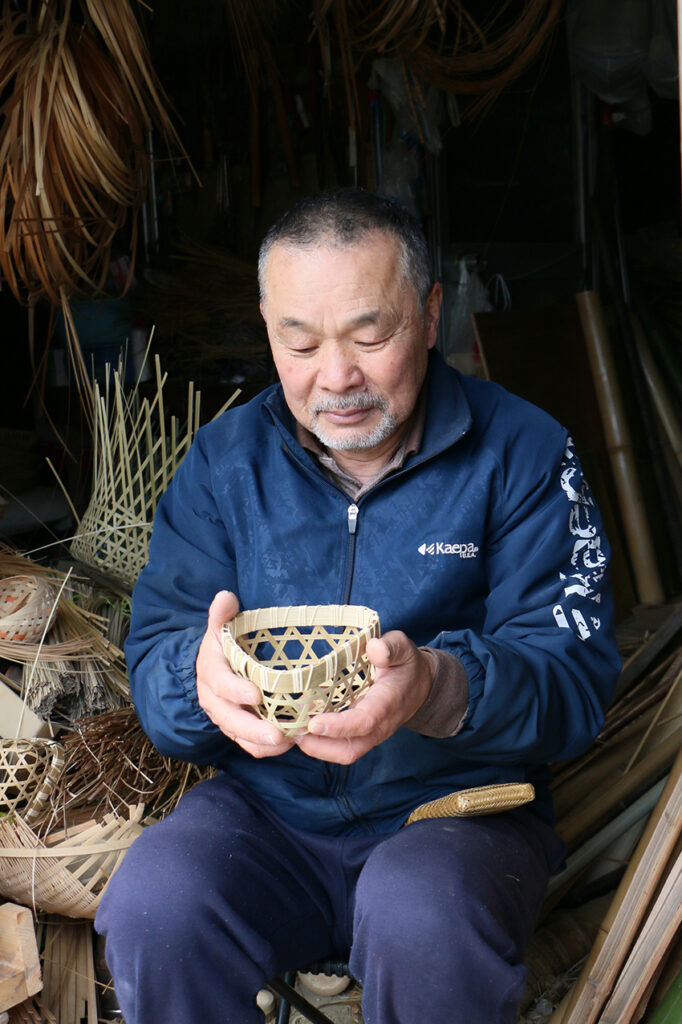 住宅街の中にある自宅の裏手の納屋には、竹の部材が所狭しと集められていました
住宅街の中にある自宅の裏手の納屋には、竹の部材が所狭しと集められていました
Nestled in a quiet residential area, behind a traditional storage shed, lies a treasure trove of bamboo materials—each piece carefully selected for its next transformation.
おむすびころりん♪と口づさみたくなる三角の竹籠。こちらは「宇多津の竹取の翁」と呼ばれる岡田さんの手から生み出される竹細工です。
丁寧に編み込まれた手仕事に思わず目を細めてしまいますが、よく観察すると見えてくるその実用性の高さ。使うシーンを想定したサイズや仕様になっていることに気づきます。
「竹は暖かい土地にしか生えない。東北の方では生えていないんですよ」と、教えてくれた岡田さん。30代の頃は和凧を作っていたそうですが、今は制作する側ではなく全国各地で開催される凧揚げ大会に参加しているとのこと。会場で竹の風車やおもちゃを作って遊びを提案していた人を見て、「竹を削ることなら自分でもできるかも」と、20年前くらいに始めたのが竹細工でした。はじめは教えてくれる人もいなかったため、図書館で本を借りてきて、独学で作り始めたそうです。道具も父親の大工道具だったノコとナタを使って、薄く削っていたものの、だんだんと使いにくさを感じるようになり、自作したり、他から用立てたりして、製作環境を整えてきたそうです。
This triangular bamboo bento box, reminiscent of the classic Japanese folktale Omusubi Kororin, is crafted by Mr. Okada, known locally as the “Bamboo Craftsman of Utazu.” His skilled hands weave each piece with remarkable precision, creating a delicate yet highly functional work of art. A closer look reveals the thoughtful design—perfectly sized and structured for everyday use.
“Bamboo only grows in warm climates. You won’t find it in the Tohoku region,” explains Mr. Okada. In his 30s, he was dedicated to making traditional Japanese kites, but now, rather than crafting them, he travels across Japan to participate in kite-flying festivals. It was at one of these festivals that he saw a craftsman making bamboo windmills and toys, inspiring him to try his hand at bamboo craft. Around 20 years ago, he embarked on this journey, entirely self-taught—borrowing books from the library and experimenting on his own. Initially, he used his father’s old carpentry tools, but as he refined his technique, he adapted his tools and workspace to suit his craft.
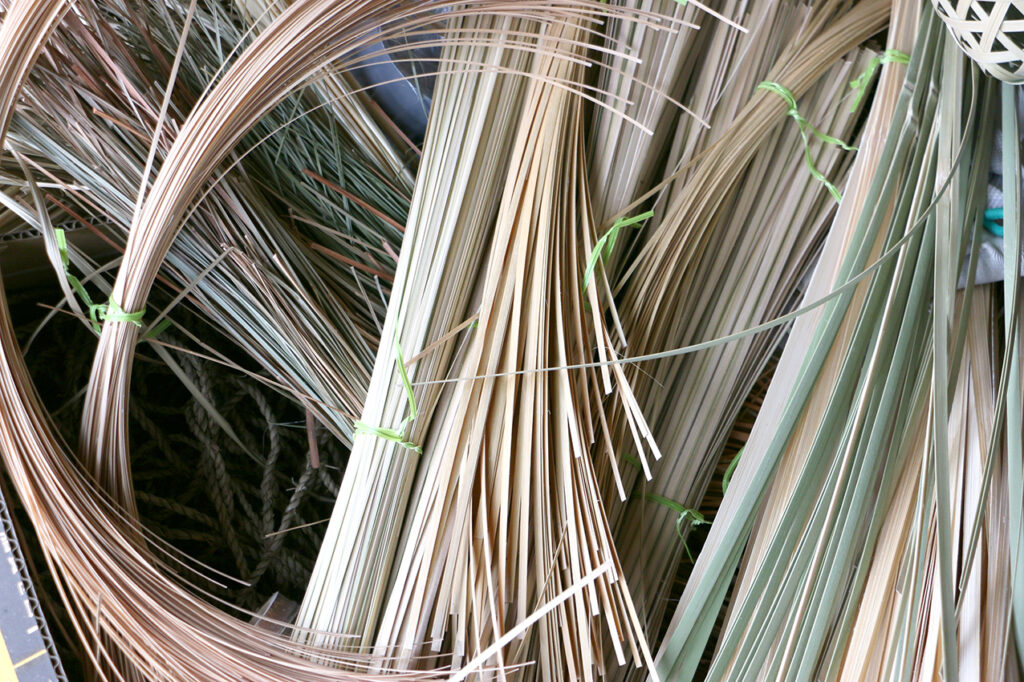 所有している土地に生えている竹を刈って材料にしています。つくるもののサイズによって節がない方がいい場合は、大きく成長した(節が長い)竹を探して手に入れているのだとか
所有している土地に生えている竹を刈って材料にしています。つくるもののサイズによって節がない方がいい場合は、大きく成長した(節が長い)竹を探して手に入れているのだとか
Mr. Okada harvests bamboo from his own land, selecting each piece carefully. For certain creations, he seeks out mature bamboo with longer internodes, ensuring a smooth, uninterrupted surface. Interestingly, some of his works are crafted from fresh, undried bamboo.
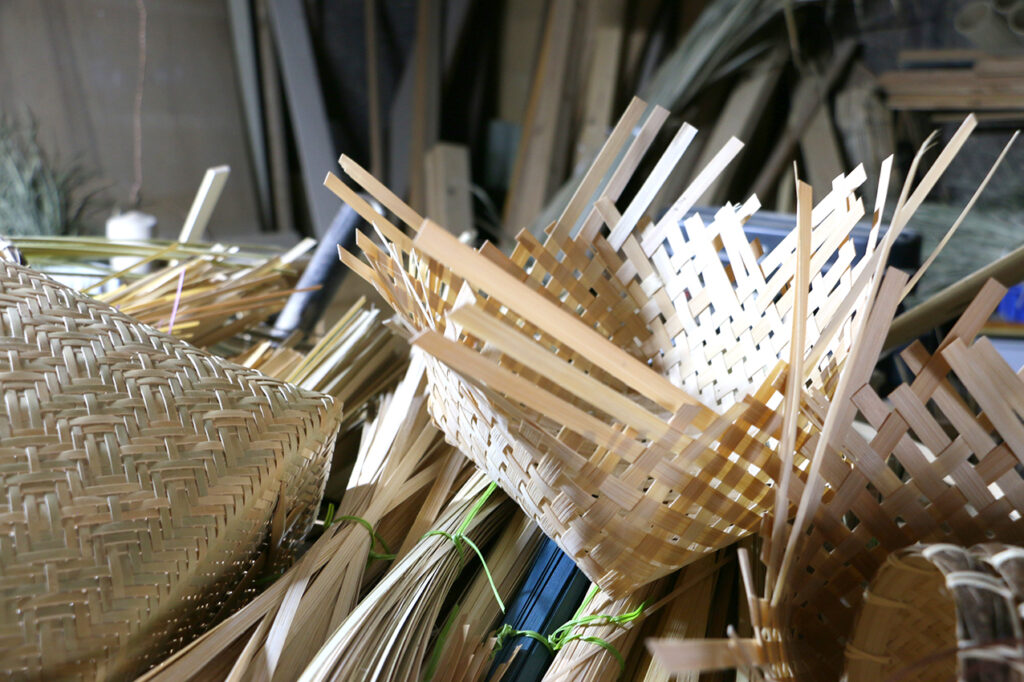 竹は乾燥させず、青竹の状態で細工にすることもあるとか。完成してすぐの色合いは青(緑)ですが、紫外線や酸化の経年でうす茶色から濃茶色になっていきます。色が変わっていく変化も楽しみのひとつ
竹は乾燥させず、青竹の状態で細工にすることもあるとか。完成してすぐの色合いは青(緑)ですが、紫外線や酸化の経年でうす茶色から濃茶色になっていきます。色が変わっていく変化も楽しみのひとつ
These start off with a vibrant green hue, which gradually deepens into shades of brown over time due to oxidation and exposure to sunlight—adding an extra layer of character to each piece.
岡田さんの手の中で竹ひごが編まれ、あっという間にカタチになっていきます。「こんな具合に作ってみたけど、使い勝手が悪そうだから考えてみよう」独り言のように呟きながら、籠をクルクルまわして竹ひごの締まり具合を調整していきます。そうして出来上がった「手しごと」のお弁当箱は、一つひとつ表情があります。熱こもらず機能的な良さもあるけれど、なにより自然の素材で手しごとが感じられるのは、大切にしたい一品になりそうです。
Watching him work is mesmerizing. With practiced hands, he weaves thin bamboo strips into form, making subtle adjustments as he goes. “I tried making it this way, but it might not be as practical as I thought—let’s rethink it,” he murmurs to himself, carefully inspecting and refining his design. Each handwoven bento box is unique, shaped by both the material and the maker’s touch. Beyond its breathability and functionality, its true charm lies in the warmth of natural materials and the artistry of traditional craftsmanship—making it a piece to be cherished.
 <宇多津謹製 竹かご>
<宇多津謹製 竹かご>
三角おむすび弁当箱
価格:2,200円(税込)
サイズ:1辺 13cm×高さ6.5cm(手作りのためサイズは目安になります)
販売: Chiiori Utazu Branch
[Utazu Craftsmanship: Handmade Bamboo Basket]
Triangular Onigiri Bento Box
Price: 2,200 yen (tax included)
Size: 13 cm per side × 6.5 cm height (Handmade—size may vary slightly)
Available at: Chiiori Utazu Branch
